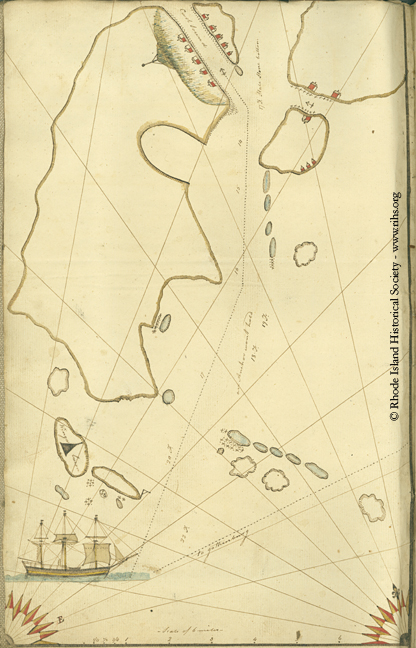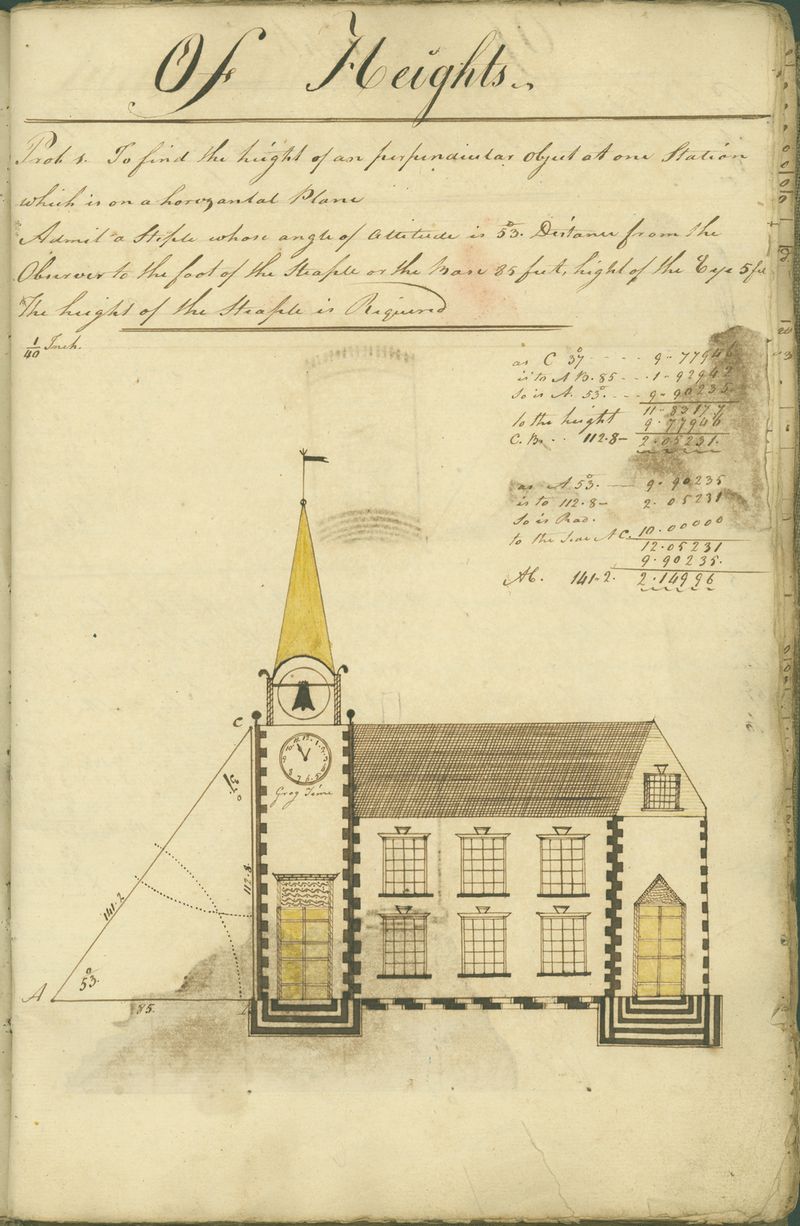Faced with a diary or a memoir or a collection of someone’s correspondence, it’s a natural impulse to try to recreate an image of what that person might have been like. In some cases—and Martin Page is one of those cases—the picture that emerges is surprisingly colorful and complex.
Born in 1772, Page spent nearly half a century at sea, rising from cabin boy to captain. So it’s not surprising that his “cyphering book”* would include maps and charts like this one:

This particular map likely depicts the islands off the coast of Gotheburg, Sweden, an area also featured in other manuscript maps in the collection,** and it features details like a very nice ship:

and Monopoly-style houses at the base of what looks like a cell-phone tower:

A lesson on right triangles offers another opportunity for Page’s artistic skills to shine. The assignment involves finding the height of a steeple:

Strictly speaking, of course, most of the illustration is unnecessary; all that Page really needed was a vertical line to represent a steeple. But that’s not nearly as much fun as sketching out an entire steeple and it’s bell, tower and flag, and once it’s gone that far, he might as well put the rest of the building in too. The level of detail extends even to the clock and its inscription:

Before there was “Beer O’Clock“, there was Grog Time.
(In the next post we’ll leave Page’s artistic abilities to focus on his literary merit…)
* “Cyphering book” of Martin Page, 1805-15, in the Martin Page Papers, MSS 599, Box 1, Folder 15, Rhode Island Historical Society. www.www.rihs.org/mssinv/Mss599.htm
A ciphering book operated as a notebook in which to work out problems and also save formulas and examples for the future, as suggested in Samuel Read Hall’s Lectures on School-Keeping, published not long after this cipher book was used.
** In many of the maps (located in folder 13), Page has pasted in printed illustrations of ships, presumably cut from books.

This is fascinating! I stumbled upon your blog through my Google Alert for references to “A Lively Experiment” – our weekly political affairs program – and I discover this great story. I would love to link up your blog to ours, and will do so later today!